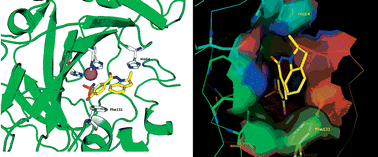Carbonic anhydrase inhibitors. Sulfonamidediuretics revisited—old leads for new applications?†
Abstract

* Corresponding authors
a
Università degli Studi di Firenze, Laboratorio di Chimica Bioinorganica, Rm. 188, Via della Lastruccia 3, I-50019 Sesto Fiorentino (Firenze), Italy
E-mail:
claudiu.supuran@unifi.it
Fax: +39-055-4573385
Tel: +39-055-457 3005

 Please wait while we load your content...
Something went wrong. Try again?
Please wait while we load your content...
Something went wrong. Try again?
C. Temperini, A. Cecchi, A. Scozzafava and C. T. Supuran, Org. Biomol. Chem., 2008, 6, 2499 DOI: 10.1039/B800767E
To request permission to reproduce material from this article, please go to the Copyright Clearance Center request page.
If you are an author contributing to an RSC publication, you do not need to request permission provided correct acknowledgement is given.
If you are the author of this article, you do not need to request permission to reproduce figures and diagrams provided correct acknowledgement is given. If you want to reproduce the whole article in a third-party publication (excluding your thesis/dissertation for which permission is not required) please go to the Copyright Clearance Center request page.
Read more about how to correctly acknowledge RSC content.
 Fetching data from CrossRef.
Fetching data from CrossRef.
This may take some time to load.
Loading related content
